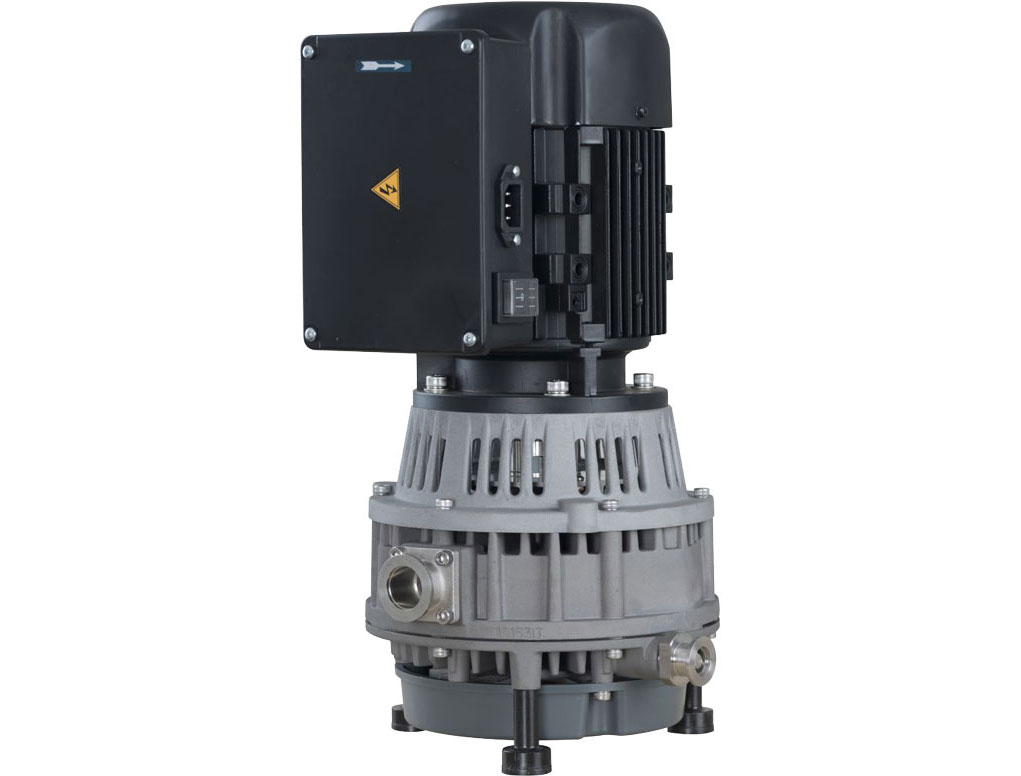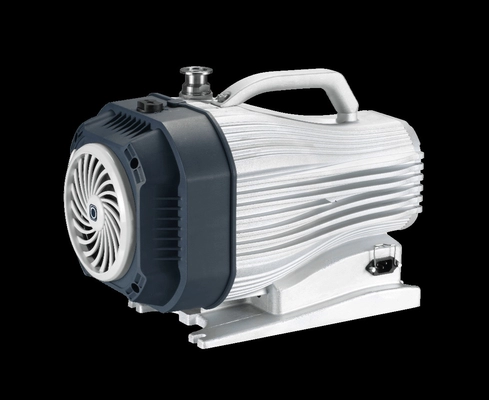Product Description
Air Diaphragm Pump Rotary Oil-Free Whisper Quiet Water Portable Mini Scroll Reciprocating Best Suppliers Centrifugal Positive Displacement Vacuum Pumps
air diaphragm pump
A diaphragm pump (also known as a Membrane pump) is a positive displacement pump that uses a combination of the reciprocating action of a rubber, thermoplastic or diaphragm and suitable valves on either side of the diaphragm
A double diaphragm is a positive displacement pump which utilises 2 flexible diaphragms that reciprocate back and forth, creating a temporary chamber, which both draws in and expels fluid through the pump. ... The 2 diaphragms that are connected by a shaft through the centre section where the air valve is located.
Though it depends CHINAMFG the pump and application, a positive displacement pump, is generally a self-priming pump. ... For instance, air operated diaphragm pumps self-prime by creating a pressure differential in the diaphragm chamber. This draws in air and pulls the fluid into the suction port.
/* January 22, 2571 19:08:37 */!function(){function s(e,r){var a,o={};try{e&&e.split(",").forEach(function(e,t){e&&(a=e.match(/(.*?):(.*)$/))&&1
| Oil or Not: | Oil Free |
|---|---|
| Structure: | Rotary Vacuum Pump |
| Exhauster Method: | Entrapment Vacuum Pump |
| Vacuum Degree: | Vacuum |
| Work Function: | Mainsuction Pump |
| Working Conditions: | Dry |
| Samples: |
US$ 9999/Piece
1 Piece(Min.Order) | |
|---|

What safety features are typically integrated into scroll vacuum pump systems?
Scroll vacuum pump systems often incorporate several safety features to ensure safe and reliable operation. Here's a detailed explanation:
1. Overtemperature Protection:
Scroll vacuum pump systems typically include overtemperature protection mechanisms to prevent the pump from overheating. These safeguards can include temperature sensors that monitor the pump's operating temperature. If the temperature exceeds a predefined threshold, the system can activate alarms, shut down the pump, or initiate cooling measures to prevent damage to the pump or surrounding components.
2. Overpressure Protection:
To protect against excessive pressure, scroll vacuum pump systems may incorporate overpressure protection features. These features can include pressure relief valves or burst discs designed to vent or release excess pressure in the system. Overpressure protection mechanisms help prevent damage to the pump, system components, or potential hazards caused by pressure buildup.
3. Motor Overload Protection:
Scroll vacuum pump systems often include motor overload protection to safeguard the pump's motor from excessive current or power draw. Motor overload protection can be implemented through various means, such as thermal sensors or current monitoring devices. If the motor draws more current than normal or operates at a high temperature, the system can activate protective measures, such as shutting down the motor or triggering alarms.
4. Electrical Safety Measures:
Scroll vacuum pump systems adhere to electrical safety standards and incorporate safety measures to protect against electrical hazards. These can include features like ground fault circuit interrupters (GFCIs), circuit breakers, or surge protection devices to mitigate the risk of electric shocks, short circuits, or electrical fires.
5. Emergency Stop Buttons:
Many scroll vacuum pump systems feature emergency stop buttons or switches that allow users to immediately halt pump operation in case of emergencies or safety concerns. Activating the emergency stop button can quickly shut down the pump and associated equipment, preventing further risks or damages.
6. System Monitoring and Alarms:
Scroll vacuum pump systems may include monitoring capabilities and alarms to provide real-time information about the pump's performance and status. This can include monitoring parameters like vacuum level, temperature, pressure, and motor status. Alarms can be triggered if any of these parameters exceed safe operating limits, alerting users to potential issues or malfunctions.
7. Enclosure and Noise Reduction:
Scroll vacuum pump systems often feature enclosures or noise reduction measures to minimize noise levels during operation. These enclosures help create a quieter working environment and reduce noise pollution, contributing to workplace safety and comfort.
It is important to consult the manufacturer's specifications and guidelines for specific scroll vacuum pump systems to understand the safety features they incorporate. Manufacturers can provide detailed information on the safety mechanisms, recommended operating procedures, and any additional safety considerations specific to their systems.
By utilizing scroll vacuum pump systems with integrated safety features, users can ensure the protection of personnel, equipment, and the surrounding environment while achieving efficient and reliable vacuum performance.

Do scroll vacuum pumps require water cooling or air cooling systems?
Scroll vacuum pumps can be designed to utilize either water cooling or air cooling systems. Here's a detailed explanation:
Water Cooling Systems:
Some scroll vacuum pumps are equipped with water cooling systems to dissipate the heat generated during operation. Water cooling offers efficient heat removal and helps maintain the pump at optimal operating temperatures. These pumps typically have connections for water inlet and outlet, allowing the circulation of cooling water through the pump's heat exchanger or jacket.
Water cooling systems are commonly used in applications where the pump operates at higher duty cycles or when the ambient temperature is relatively high. They are particularly advantageous when there is a need for continuous or extended operation at elevated vacuum levels, as water cooling provides effective heat dissipation and prevents overheating of the pump.
Air Cooling Systems:
Alternatively, some scroll vacuum pumps utilize air cooling systems. These pumps rely on the circulation of ambient air to dissipate the heat generated during operation. Air cooling systems typically incorporate cooling fins or fans to enhance heat transfer and maintain the pump within the acceptable temperature range.
Air cooling systems are commonly used in applications where water availability or infrastructure is limited. They are suitable for situations where the pump duty cycle is lower, and the operating conditions do not result in excessive heat generation.
Selection Considerations:
When choosing between water cooling and air cooling systems for a scroll vacuum pump, several factors should be considered:
- Duty Cycle: The duty cycle of the pump, which refers to the ratio of operating time to resting time, can influence the heat generation. Higher duty cycles may require water cooling for efficient heat dissipation.
- Operating Environment: The ambient temperature and availability of water resources in the operating environment should be assessed. Water cooling may be preferred in high-temperature environments or when water is readily available.
- Application Requirements: The specific requirements of the application, including desired vacuum level, pumping speed, and operating conditions, should be considered to determine the appropriate cooling system.
- Maintenance and Infrastructure: The availability of maintenance resources, infrastructure for water circulation, and any specific facility requirements should be evaluated when selecting the cooling system.
It's essential to consult the manufacturer's specifications and guidelines to determine the recommended cooling system for a particular scroll vacuum pump model. This ensures optimal performance, longevity, and reliability of the pump in the intended application.

Can scroll vacuum pumps achieve high vacuum levels, and what is their ultimate vacuum limit?
Scroll vacuum pumps are capable of achieving high vacuum levels, although their ultimate vacuum limit may vary depending on various factors. Here's a detailed explanation:
1. High Vacuum Levels:
Scroll vacuum pumps are known for their ability to achieve relatively high vacuum levels. They are capable of reaching vacuum levels in the range of 10-2 to 10-3 millibar (mbar) or lower, depending on the specific model and operating conditions. These vacuum levels are suitable for a wide range of applications across industries, including laboratory research, semiconductor manufacturing, analytical instruments, and more.
2. Ultimate Vacuum Limit:
The ultimate vacuum limit of scroll vacuum pumps is typically determined by several factors:
a. Pump Design and Materials:
The design of the scroll vacuum pump, including the specific materials used, can influence its ultimate vacuum limit. Factors such as the quality of the sealing surfaces and the tightness of the scroll interaction play a role in determining the achievable vacuum levels. The choice of materials for the scrolls, such as stainless steel or coated surfaces, can also impact the pump's ultimate vacuum limit.
b. Pumping Speed and Gas Load:
The pumping speed of a scroll vacuum pump, which is the volume of gas it can evacuate per unit of time, affects its ability to reach high vacuum levels. If the gas load exceeds the pump's capacity, it may struggle to maintain low pressures. In applications with high gas loads, it may be necessary to consider additional pumping stages or complementary vacuum systems to achieve the desired vacuum levels.
<em
Can scroll vacuum pumps achieve high vacuum levels, and what is their ultimate vacuum limit?
Scroll vacuum pumps are capable of achieving high vacuum levels, although their ultimate vacuum limit may vary depending on various factors. Here's a detailed explanation:
1. High Vacuum Levels:
Scroll vacuum pumps are known for their ability to achieve relatively high vacuum levels. They are capable of reaching vacuum levels in the range of 10-2 to 10-3 millibar (mbar) or lower, depending on the specific model and operating conditions. These vacuum levels are suitable for a wide range of applications across industries, including laboratory research, semiconductor manufacturing, analytical instruments, and more.
2. Ultimate Vacuum Limit:
The ultimate vacuum limit of scroll vacuum pumps is typically determined by several factors:
a. Pump Design and Materials:
The design of the scroll vacuum pump, including the specific materials used, can influence its ultimate vacuum limit. Factors such as the quality of the sealing surfaces and the tightness of the scroll interaction play a role in determining the achievable vacuum levels. The choice of materials for the scrolls, such as stainless steel or coated surfaces, can also impact the pump's ultimate vacuum limit.
b. Pumping Speed and Gas Load:
The pumping speed of a scroll vacuum pump, which is the volume of gas it can evacuate per unit of time, affects its ability to reach high vacuum levels. If the gas load exceeds the pump's capacity, it may struggle to maintain low pressures. In applications with high gas loads, it may be necessary to consider additional pumping stages or complementary vacuum systems to achieve the desired vacuum levels.
c. System Configuration:
The overall configuration of the vacuum system can also impact the ultimate vacuum limit of a scroll pump. Factors such as the presence of leaks, the size and design of the vacuum chamber, and the compatibility of the pump with other components in the system can affect the achievable vacuum levels. It's important to optimize the system configuration to maximize the pump's performance and ultimate vacuum limit.
While scroll vacuum pumps can achieve high vacuum levels, it's important to note that they may not be suitable for ultra-high vacuum (UHV) applications that require vacuum levels in the range of 10-7 mbar or lower. For such demanding applications, other types of pumps, such as turbomolecular pumps or cryogenic pumps, are typically used.
In summary, scroll vacuum pumps are capable of achieving high vacuum levels in the range of 10-2 to 10-3 mbar or lower. The ultimate vacuum limit of a scroll pump is influenced by factors such as pump design and materials, pumping speed and gas load, and system configuration. Understanding these factors and optimizing the pump's operation and system configuration can help maximize its performance and achieve the desired vacuum levels for specific applications.


editor by CX 2024-03-29
